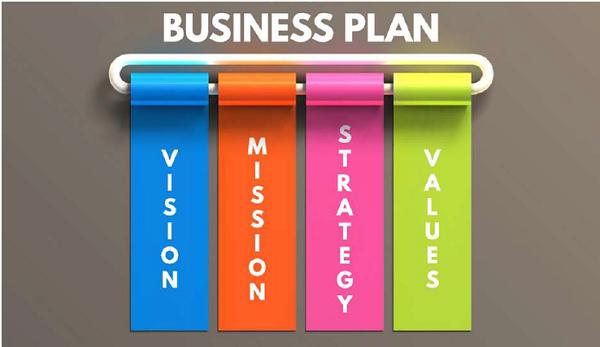Sales Planning - Quick Guide
Sales Planning - Introduction
Sales Planning is a key function in the procedure of sales management process. Sales planning is an effective method that involves sales forecasting, demand management, setting profit-based sales targets, and the written execution steps of a sales plan.
Sales Planning is the process of organizing activities that are mandatory to achieve business goals. A sales plan contains a strategic document that figures out your business targets and several resources. These can be used for some activities which you perform to reach your desired goal.

Sales Planning involves two steps, i.e. formation and maintenance of a particular plan, in which a salesperson is expected to use his conceptual skills to meet his objective. As such, planning is an elementary quality of intelligent behaviour.
Before launching a new product in the market and proceeding with the set of activities, which generally follow the launch of a product, we have to create a strategic plan for that. Sales Planning is an essential element in the management process.
Various Sales Plan techniques are often used in several organizations according to their requirements, whether they need to plan quarterly, half yearly or annually. If your sales staff is good, then you would not need to do research from the beginning to get more sales in the market.
Organizing Internal Resources
If you are a manager of an organization, then it is your responsibility to recognize your staff’s characteristics and understand their individual strengths and abilities. This makes it easy for you to allot several responsibilities to those team members, who have the relevant experience to handle all the work.
The most important step is to analyse all the activities of your team members and identify whether there is a scope of improvement in your current plan. This can be discussed with senior officials, for more informative ideas. These ideas might pave way for the modification of the said plan. This will certainly result in an increase of the product’s sales volume to some extent.
It is also necessary to train your team members by regularly organizing various conferences, informative lectures and seminars delivered by some highly skilled persons. This will help the team to gain knowledge and will make it easier for them to adapt their working style according to the new planning strategies. This aids in the overall enhancement of the sales team which will definitely result in further growth in the competitive markets.

It is the duty of a team manager to give his team members the right direction in which they have to work to get the desired goals. The manager should allot appropriate work to the team members, and regularly motivate them. This will help in creating an ideal plan for the growth of the company in any competitive market.
Characteristics of a Sales Plan
A planning structure that is commonly used in business strategic planning is the VMGS Model. When your organization wants to achieve higher sales targets through their planning, then they use this framework for reaching the desired objective.
The VMGS model is based on the observation that, when you want to create an effective plan, you will need to follow several elements, which are −
- Vision
- Mission
- Goals and objectives
- Strategies and tactics
While implementing the VMGS model, the management will have to do the necessary steps of engaging all their clients and stakeholders in order to frame the sales plan as well as the corporate plan. The objective is to end up with a plan that improves their organization, various departments and every employee’s performance.
Vision Statement
A vision statement is a tagline that encapsulates the future that the management wants for their organisation. The objective of having a company vision is to both inspire and guide the employees towards taking the right steps. This helps to balance goal-seeking with sensible insights into the potential future. In the long run, all corporates run a long-term business strategy, which they then communicate to their employees internally first. Then this strategy is communicated externally through intranet, website, various newsletters, regular press releases, and company annual reports, etc.
The Mission Statement
The chief purpose of a mission statement is to identify and delegate various business activities. It acts like a map that connects all the various operations running in a company, along with their objectives. It is an efficient tool to motivate employees, departments, teams and corporates.

Mission Statement vs Vision Statement
The difference between Mission Statement and Vision Statement is that a Mission Statement is often shared only with the employees to enhance their productivity, but a Vision Statement is shared with employees as well as other stakeholders. The other difference is that while a company can have one Mission statement, its departments are free to have their own individual Mission Statements. In contrast, a company can have only one Vision Statement.
Goals and Objectives
Goals are the best short-term directions that help you to proceed in your mission. These goals are in reality some unique needs, which have to be accomplished. There are three types of goals that need to be discussed −
The goals that are finalized and decided upon through corporate mandate are called corporate goals. This will mainly involve the Dollar Volume.
The goals that are finalized within individual departments with the main focus on acquiring new customers is called departmental goals. It is often chalked out after a company introduces new products in the market for some unique stakeholders.
The third type of goal is personal business goal. This goal is not strictly for business as it involves personal learning. Through this goal, an individual can learn some new skills and programs that help him improve in his business-conducting skills.
Strategies and Tactics
All the organizations want to achieve their goals and objectives at any cost. To do that, they follow some unique strategies and tactics. Each company wants to protect their strategies and tactics from being leaked to their competitors. Very often, the difference of success and failure in today’s competitive market could be a month’s delay in implementing a plan.

When we talk about strategizing on a department level, it becomes a vital process because all the employees need a perfect action plan in order to work smoothly. All the necessary guidelines should be mentioned properly, so that the employees take all the essential steps to advertise their products or brands in different areas.
Sales Planning - Corporate Strategies
Each and every level of an organization operates on meticulous planning and decision making. This is an important aspect not only for the lower-management, but also for the senior officials, who work in those areas where long-term plans are created and modified. Several heads of the organization decide what necessary changes are needed in a plan to boost their revenue.
Example
If a brand is liked by a lot of customers in the market, then the management may decide to launch some more new products of that brand in the market. They analyse the graphs carefully and select which sales plan is suitable for a particular product’s promotion to increase its sales. They also share tips on choosing the best strategy for the next three to five years.
Often such decisions are only taken on a senior managerial level as the junior staff members only follow those details that their seniors provide them. However, with regular training, the juniors can also help in identifying practical areas where their organization can show growth and achieve a better position in the market.
Types of Strategies
There are different types of strategies to make a sales plan successful. Most of them are long term strategies like determining the MRP, etc. However, some are medium-term (offers valid for a month) and short-term strategies (one-day offers) also. The toughest strategy to plan is the long-term strategy. It is a difficult process because these steps are followed by the organization for longer durations to reap the results.
Short-Term Planning
The word short-term emphasizes on short time spells of about ninety days to a maximum of one year. Here, the focus of plan is only on achieving an objective. The nature of these type of plans is tactical and are implemented on some higher frameworks.

Proper short-term planning is the key to success for sales managers. In short-term planning, the time taken for each and every activity is calculated because this type of a planning is often merged along with the departmental plans, where every step has some fixed amount of time.
Medium-Term Planning
The medium term planning involves setting slightly longer term objectives. Here, the key focus is on determining all the problems associated with a plan that’s been operational for some time, and then modifying the existing plan according to the requirement. This results in the organization’s product getting a progressive growth in the market.
Long-Term Planning
Long-Term planning is the combination of small-term planning and medium-term planning. This kind of planning is generally implemented in large organizations, because they create a plan only once in a long time-span of 2-3 years. Any changes in such plans are made only because of any change in market statistics.
Some useful steps undertaken while selecting a perfect sales plan −
Determine the customer’s needs for a particular product.
Try to build the product according to the customer’s needs.
Build a strategic plan under the expert guidance of senior officials.
Build a short-term plan, implement it and then convert it into a medium-term plan, if the results meet the expectations.
At the end of one medium-term plan, analyze the results and if found positive, then implement it as a long-term goal.
It is a crucial step for an organization to select the appropriate plan, because the overall growth of a new product is totally dependent on the initial plan and employee knowledge.
Sales Planning - Priorities of a Sales Plan
A sales plan is an informative technique that allows salespeople to share their information with the management and get guidance from them. It is an effective tool for enhancing a product’s sales and its popularity among the people. In a sales plan, consumers are generally profiled under different segments. This profiling helps companies understand what a customer demands from a particular product. This profiling is sometimes done on the basis of regions to determine the need of customers in some particular areas.
The organisations have identified some key priority areas that help them in managing corresponding accounts. These priorities have been arranged as shown below −
Customers
It is the company’s responsibility to check how it represents its brand in front of its customers. If the product’s representation convinces the customers, they will recommend it to others to try at least once.
If a company has a large group of such satisfied and convinced customers, its product’s market value will increase.
Customers here includes the industries and markets that are helpful in increasing the popularity of products among people.
Employee
This level enlists the employees that work for the success of an organization. If a company has good employees, then it becomes successful very soon. However, if the employees don’t understand their responsibilities, then the organization will lead to failure. So, an employee is a critical aspect for the success of an organization.
Product and Services
This involves all the various products and services offered at different levels of the product’s launching, which are − engineering, manufacturing, finance, accounts, suppliers, etc. If your product is advertised properly, then the customers will buy it with trust. After that, it is the responsibility of the marketing staff to provide the best services to their customers, so that they give a good review for the product.
Competition
All the products are introduced as brands today in the market. This creates a unique identification pattern and helps build competition among various other brands of competitors. However, after a point of time, customers get confused with all the choices and are undecided as to which is the best one among all the brands.

If a company wants to attract more customers towards its products in such a competitive market, then it has to promote its products on several platforms. This is where the companies will furnish information on what unique features the product contains, which are not provided by any other companies.
This is called advertisement of products and is considered a very effective tool in boosting the sales of products in the market. It is the duty of team manager to decide which level of priority is handed down to which department and salesperson. This is how the company manages to grab more customer attention towards your product.
Factors to Consider While Finalizing Sales Plans
Firstly, the sales team ties up with a new product development process, because it brings more energy and focus on the product. Experts and other employees help the team to research on various products, market conditions, and the competitors in the industry. The next step will be to propose all the strategies and consider other important factors that will help boost the sales of this product in advance. Before proceeding with any plan, the management of a company will consider the following questions −
- What is the overall length of a sales cycle (1 week, 1 month or 1 year)?
- How do you profile the customers (industry-wise or region-wise)?
- Are there any organizational factors to be considered while planning?
- How many competitors are there that can affect your sales in the market?
- What factors can help you match your competitors (products, reputation, etc.)
- How do the sales-teams interact with the new process development team?
- What are the different researches done on this and similar product?
What levels of management will be involved in this planning (senior level, sales-team, or multilevel)?
Sales Planning - Creating a Sales Plan
The process of chalking a plan starts with identifying productive hours and those that are wasted on unproductive activities. The second step is to implement policies that minimize the unproductive time and maximizes productivity. A sales-plan should always have provisions to monitor team’s activities and progress.
An ideal Sales Plan should cover all the reasonable proposals that have been suggested by the clients, while covering all the aspects that you need in a sales cycle. Its main aim is to determine how to sell the product internally too along with various other implementation techniques of your product.
A successful Sales Plan involves the following actions
Before setting a plan, all the priorities are identified and arranged. After this, the respective allocation of necessary resources is done. The managers ensure that the allotted time and resources are used until the desired goals are achieved.
The next step is to develop strong working teams and strengthen their internal and external partnerships. This will help the company to easily share necessary information as well as its resources and then advertise new and improved business products.
Plan the budgeting process in advance and check if the process is predictable or not. Corresponding adjustments in budgets to include various expenses, revenues are also calculated in this step.
Finally, create an experienced team that has already worked on a similar project and is familiar with all the processes involved.
This way, it is possible to create a successful plan that assists companies to run their business more efficiently. However, plans do not bring success; their successful implementation does. The team managers need to make sure that all the team mates are putting in their best and sincere efforts in this plan.
Customer-Centric Organization
A customer-centric management cares the most about the satisfaction of its customers, their needs and expectations from the product. Over the last few years, organizations have adopted effective organizational structures, where people implement policies that revolve around impressing more customers and getting customer satisfaction.
Gone are the days when the main goal was to create more demand and sell more products. At that time, the customer wasn’t involved even as a third person in this process. Today, a company that does not communicate with its customers is quickly deserted. This is in sharp contrast to those times, when daily activities were handled in the background by human resources and accounting department, with virtually no interaction with the customer, either directly or indirectly.
To be customer-centric, organizations have to pre-analyse all the expectations a consumer has from a product of a particular segment. This phase involves asking three crucial questions −
- What is the company’s definition of a satisfied customer?
- What is the customer’s expectations from us?
- What is the desired customer experience?
As you can see, the central focus of the organization now is the satisfaction of the customer. Organizations that are truly customer-focused, instruct every department to think in terms of increasing acceptance in the customer’s mind. This means that the organization will not directly make contact with the customer, but will generate some strategies and processes to increase the customer experience.
Successful organizations have their customer-centric processes defined to all their employees, so that they also can participate in the supply chain and meet the standards of excellence, communications, latest technology and other factors.

The following steps help companies to enhance the quality of its output, increase customer satisfaction, save costs and deliver high profit margins. There are numerous advantages that an organization has over others, if it has a customer-centric sales team −
Loyal Customer Base − If you impress your customers and satisfy them with your services, then it is difficult for your competitors to take away your clients because they rely on your services.
Competing on Overall Value − If the price of your product is so high that only a few customers can afford it, then the product will flop in the end. The price of a product indicates many factors like quality, availability, etc.
Benefits to End-Users − The end-users or customers that receive the final services will look to get all the benefits including cost, quality and the corresponding services. Once it is given to them, the customers remain loyal to the organization and have a long-term relationship with them.
Benefits to the Organization’s Staff − If your organization has more sales and builds numerous long-term customers, then it gives profits to your team. If your company gets good profits, then you and your staff also receive more benefits.
With the help of a customer-focused organization and all the other departmental synergies, it is time to analyse more positively on how to divide appropriate work among other departments. This will also help in knowing the significance of all of the other departments in the sales planning process.
In organizations, where the cooperation and integration between employees is weak, marketing teams are often found at odds with the sales teams. In such companies, it is a common occurrence to find that the marketing team hasn’t attached the key benefits of products, before sending them to the Sales Team.
Sometimes, the Sales Department has some documentation and follow-up issues with the marketing department. In such cases, often the managers have to enter the picture and sort out all the problems between them.
Sales and Marketing Relationship
Marketing is a crucial department in the corporate structure that has a direct link with sales. To get a clear picture on how marketing works, a person needs to have a holistic approach towards the whole model of business. Marketing is a sales-impacting process that enhances the performance of your sales team. It also has the capability to boost their results more than any other department.
These days marketing has become a one-way messaging system, through which you advertise your product and do direct marketing of it in the market. Still, in some organizations, they still keep both marketing and sales under separate teams.
Example
Business development becomes a part of sales department in one company, but falls under marketing in some other companies. But, it is necessary for both sales and marketing teams to recognize each other's roles, because the information they furnish to each other is significant in building their department's business plans.

The following are some common similarities and differences between the sales and marketing departments with some valuable integration strategies that improve the performance of both the departments.
Role of the Sales Department
- Sales department generates orders.
- They work on short-term or medium-term goals.
- Try to build one-to-one business relationships with customers easily.
- They setup key accounts and all other account management strategies.
- The main and front line dealing in sales department is with the customers.
Role of the Marketing Department
- They decide the short, medium, and long-range goals.
- This creates customer leads for the sales team to follow up.
- Identifies the strategies that are informational as well as entertaining.
- Responsible for conversational messaging and some other brand imaging.
Nevertheless, all the above qualities will vary for each and every case depending on the working model of the organization and type of products or services they offer. When we are talking about an organization that sells credit cards – it is a totally marketing-focused company, so they don’t rely on field sales-representatives as much as they do on sales and customer service representatives.

The main emphasis of team members in the marketing department is to be able to generate reliable and prime leads for the transactional sales. On the flip side, they might not be effective in a niche market, like that of software sales, because a high-end supplier of business software is a sales-focused company.
Some companies mention themselves distinctly either as a sales organization or a marketing organization, so that their clients can understand the services they offer. However, such labelling is often unnecessary, as it is totally dependent on the difference between the budget available for the sales, and the budget available for marketing. Some examples that are commonly considered under this category are −
Sales Organizations − Sales organization needs various marketing strategies to popularize their products among people.
Pharmaceuticals − The people trust on other customer reviews or some social media feedback, because now people also purchase medicines online.
Consulting − The consulting industry also depends on good feedback from others for business.
Automobiles − Automobiles largely depend on marketing for good business.
Financial Services − Financial services need proper marketing to increase the number of clicks.
Marketing Organizations − Marketing organizations need sales strategy to increase their sales.
Consumer Products − Need the best sales and marketing strategy to enhance the name of the product.
Travel and Leisure − You need to write a review on the home page, so people trust you more.
Retailers − Retailers design their own sales, offers and marketing strategies.
Entertainment − This industry thrives on marketing. A good review can ensure large audiences.
We can’t completely demarcate the structure, function, objectives and line of work for both sales and marketing departments. However, the key factor is that the department of sales and marketing must always work in collaboration.
Marketing Research Techniques
Marketing Research is conducted to understand the needs of the customer and the feedback that customers give to different products. This helps a company know all things that are working for the product and all those that aren’t.
Marketing Research can be broadly specified into two types −
- Primary Research
- Secondary Research
Primary research is used to get new information from the customers. It is often employed after the launch of a new product. Primary research includes three best market research techniques, i.e., observational research, focus groups, and surveys. The combination of these three techniques is called Primary Research. Let us discuss what these three techniques are and why they are so popular −
Focus Groups
According to the experts, focus groups contain a group of participants, who are selected on the basis of various factors. They will be asked to use a common product and after using it, give their opinion. This enables the organization to estimate the interest that the product generates among people.

Observational Research
Observational research is the process of observing the purchasing pattern of the customers and studying the reasons or factors that draws a customer towards a product. This involves providing a range of options to a group of people in need of a product and then noting their reaction and the reason they selected one of them. The best places for such a research are malls and supermarkets.

Surveys
Surveys are conducted often with the help of a common questionnaire that the people participating in it fill and submit. It is a quick, effective and easy way to get a lot of feedback from numerous sources. One of the biggest reasons behind conducting surveys is that they include a wide range of people and from different demographics.

Secondary Research
The secondary type of a research may include the information you already acquire, but which has not yet been processed. The following are some areas where the category of secondary research may be involved −
Sales growth − Check the growth of sales for improvement or any decline.
Customer geographic distribution − How people in different places are responding to the product.
Sales of new products vs core products − You have to carefully check the graph of sales.
Industry growth − The sales manager has to analyze regularly whether the new product has led to some growth.
Product or service growth − Here you will note down all the growth factors for your product as well as services.
You have to put together all the necessary information. Now, you have to interpret it and finally incorporate the various findings in the planning process. The resources that you need for secondary research depends on your company records and external resources such as Department of Commerce, trade associations etc. The reports of surveys and several researches assist you to determine all the successful tips. The two areas that deal with marketing and its related products or services are development and pricing strategies.
Sales Planning - Pricing Decisions
When a new product gets launched, a corresponding pricing decision is also initiated and handled by one or more departments in the organization. The strategy of pricing varies from one organization to another depending on their cost of labour, geographical considerations and from one industry to another.
The right pricing of a product is one of the most important factors of getting a good sales volume. There are various customers from different economic backgrounds and families. The proper pricing of a product gives a positive message to the customers. Products that are very effective in addressing customers’ needs, but are well out of their purchasing power are doomed to fail.

Before getting a final decision about pricing, teams also think from the end-user’s view about the price of the product. Pricing strategy relates mostly with the sales team, so from their perspective − it is the chief factor to achieve goals.
Seniors propose what they think to be a correct price of the product and then take opinions of the team members as well. After this, a clear picture of the pricing strategy is made. Some internal and external factors that play important roles in pricing decisions are as follows −
External Factors
- Competitors offering similar products and services.
- Government and other regulations related to a new product.
- Demands of customers for these type of products and services.
- Regulations for premium products type of a business or industry.
- The economy of the country in which the company is launching a product.
Internal Factors
- Cost of goods sold, fixed costs, variable costs, etc.
- Various shareholders’ sentiments.
- Strategies needed to increase the value of your product.
- Company's brand recognition and reputation.
- Channels of distribution from the manufacturer, distributor to the consumer.
- Sales machineries, e.g. field sales, inside sales, telemarketing or online sales.
- Nature of sales, transactional, long-term, reorder or replenish.
- Government bidding, proposal requests, foreign exchange, letters of credit.
All these factors affect your pricing policy, so it’s important to carefully consider their role in the market. You should also be aware of the skills that are necessary to deal with these kind of issues. All the internal players and their corresponding processes need to extrapolated for their effects on a future day and time.
Example
A country going through a drastic political change won’t be the right place to invest a lot of money in, as the company cannot predict the customer sentiment in that particular country.
For financial services companies, all pricing decisions are taken primarily by the marketing department. However, for services like data recovery, data storage, etc., pricing is decided by the sales department. This is sometimes done with the assistance from marketing, finance and other departments as well.
Business Continuity Planning
Conducting a business plan is a difficult task because the tools used in the process keep changing frequently. That is the reason you have to constantly communicate with your team members, people in different departments as well as other organizations and the stakeholders to collect all the essential information needed to plan the present and future actions.
Business continuity is the process of maintaining business functions or resuming them in an event of a major disruption. A lack of prior planning is no excuse for an organisation today to ask for a long time to recover. We need a Business Continuity Plan (BCP), when an organisation faces any challenges. BCPs are generally implemented by the same team that had proposed it.

The need of a business continuity plan has been growing frequently. It is driven by the stakeholder demand and the regulatory compliances. Business continuity requirements will make various organisations review their plans and then test those results they consider crucial in the operational process. Their main objective is to reduce the disturbance in the business processes, maintain the confidence and trust on the employees of the organisation.
Nowadays organisations do not risk working on incomplete, inefficient plans. They always make a backup plan to handle all identifiable contingencies and failure scenarios.
Some Benefits of Implementing Business Continuity Plan are −
User Friendly − It is user friendly because team members can easily implement it in their business.
Quick Implementation − The implementation of business continuity plan is frequent. If you have highly skilled expertise, then it becomes a fast process.
Built-in reporting − When we implement business continuity plans, we maintain a report on which situations that led us to implement them and this in-built reporting feature with steps highlighted help other teams.
When the company finds a suitable investment opportunity, they start to chalk out an appropriate BCP for the product, which is then tied up with a corporate plan. The corporate plan then analyses the previous sales plan and filters all the problems associated with it.
A sales plan also gives you some good tips or guidance on how to handle issues that the company’s sales forecasting has predicted for the future processes. If the corporate plan expectations don’t match with your business prospective, then it means that the team and the company are working in opposite directions. It ultimately results in not meeting any objectives or goals with an overall negative effect to business and market credibility. So it is critical that the sales plan has enough allocated resources and budget to withstand even a major breakdown.
















